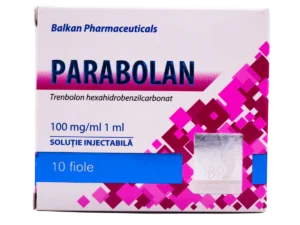Introduction to Forearm Strength and Grip
Forearm strength and grip are fundamental not only for daily functional activities but also for elevating performance in the gym. Stronger forearms contribute to enhanced endurance, superior lifting abilities, and a significant reduction in the risk of injuries. Emphasizing grip and forearm strength in your fitness journey transcends aesthetics, paving the way for improved functional strength and performance across a spectrum of activities. By dedicating time to train your forearms, you’re investing in a foundation of core strength that benefits every aspect of your physical health.
Why Focus on Your Forearm Workout?
Neglecting forearm workouts is a common oversight that can stunt your progress towards achieving bigger forearms and a stronger grip. Incorporating specific forearm exercises into your training regimen is one of the best ways to enhance grip strength and overall muscular development. A good grip and stronger forearms allow for greater endurance in your workouts, enabling you to handle heavier weights and challenging your muscles to grow.
Beyond the gym, grip strength plays a vital role in many daily tasks—be it opening jars, carrying groceries, or performing manual work. A good grip ensures that these activities can be done safely and efficiently. Moreover, grip strength is closely related to core strength and stability; when you perform activities requiring grip, you often engage your core, promoting overall body strength and posture.
Health Indicators and Grip Strength
Research has shown that grip strength is a reliable indicator of overall health and has been linked to cardiovascular health, recovery from injury, and even longevity. Poor grip strength is not merely a sign of diminished muscular function; it’s increasingly seen as a harbinger of critical health conditions. Improvements in grip strength can lead to better health outcomes and a reduced risk of injuries by promoting bone density, joint function, and muscle health.
The Anatomy of the Forearm: Understanding Muscle Groups
The forearm is a complex anatomical structure that plays a pivotal role in various movements and functions of the hand and arm. It consists of several major muscles, tendons, and bones that work together to facilitate movement and provide strength. The primary muscles in the forearm can be categorized into three main groups: the forearm flexors, forearm extensors, and anterior forearm muscles. Each of these muscle groups contributes uniquely to the forearm’s overall strength, size, and functionality.
Forearm Flexors
The forearm flexors are located on the palm side of the forearm. These muscles are primarily responsible for bending the wrist and fingers, enabling you to perform actions like gripping an object or flexing your hand. The forearm flexors are crucial for tasks that require a strong grip, making them a key focus area for exercises aimed at improving grip strength. Strengthening the flexor muscles can lead to significant improvements in grip strength, which is vital for various athletic activities and daily tasks.
Forearm Extensors
On the opposite side of the forearm are the forearm extensors. These muscles are situated on the back of the forearm and are responsible for extending the wrist and fingers. Activities that involve pushing or lifting often engage the extensor muscles. Strengthening the forearm extensors is important for balanced muscle development and can prevent injuries that might occur from muscle imbalances. Exercises targeting these muscles can help improve the stability and mobility of the wrist and fingers.
Anterior Forearm Muscles
The anterior forearm muscles include both flexors and extensors and play a critical role in the pronation and supination of the forearm. This means they are involved in rotating the forearm so that the palm faces up (supination) or down (pronation). These movements are essential for tasks that require rotational movements of the hand and arm, such as turning a doorknob or using a screwdriver. Developing the anterior forearm muscles enhances overall forearm strength and functionality, allowing for more versatile movements.
Each part of the forearm is intricately involved in various aspects of hand and wrist movement. Targeting these areas through dedicated forearm exercises is essential for building comprehensive forearm strength. By focusing on the development of the forearm flexors, extensors, and anterior muscles, individuals can enhance their grip strength, improve the aesthetics of their forearms, and increase the overall functionality of their upper limbs. Exercises such as wrist curls, reverse wrist curls, and forearm pronation and supination movements are effective in strengthening these critical areas of the forearm, leading to improved performance in sports, weightlifting, and daily activities.
The Best Forearm Exercises
To build forearm strength and achieve better grip strength, incorporating a variety of exercises is key. Wrist curls, reverse grip curls, and grip-intensive exercises like the farmer’s walk are among the best exercises for bigger, stronger forearms. These movements challenge your forearms, promoting forearm growth, strength, and endurance. Incorporating exercises that engage the whole part of the forearm, including the anterior and posterior muscles, ensures a comprehensive development of both sides of your forearm.
Here are some of the best exercises designed to enhance your forearm’s appearance and functionality:
Simple Exercise Routines for Strong Forearms
Creating strong forearms doesn’t necessarily require complex equipment or advanced exercises. With a focus on fundamental movements, you can effectively enhance forearm strength and appearance. Here are simple routines that target key areas:
Wrist Curls and Reverse Wrist Curls
These exercises are staples in forearm training, focusing on the forearm flexors and extensors. Sitting with your forearms on your thighs or a bench, hold a dumbbell in each hand, palm up for wrist curls and palm down for reverse wrist curls. Flex and extend your wrists to work the muscles thoroughly. Aim for 3 sets of 12-15 repetitions.
Forearm Pronation and Supination with a Dumbbell
Holding a dumbbell vertically in one hand, rotate the wrist to turn the dumbbell inward and outward. This movement targets the rotation aspect of forearm strength, engaging both the pronators and supinators. Perform 2-3 sets of 10-15 reps on each side.
Grip Challenges with Towel Pull-ups or Farmers’ Walk
Wrap a towel around a pull-up bar for an added grip challenge during pull-ups, or carry heavy weights by your side in the farmers’ walk. Both exercises significantly enhance grip strength. For the farmers’ walk, aim to walk a set distance or for a specific duration, increasing weight over time.
Advanced Techniques for Forearm Training
For those looking to push their forearm training further, incorporating advanced techniques can lead to significant gains:
Reverse Grip Exercises
Incorporating reverse grip movements, such as reverse grip bench press or rows, adds an extra dimension to your training, intensifying the engagement of the forearm muscles.
Dynamic Movements for Forearm Engagement
Incorporate dynamic exercises like battle ropes or kettlebell swings, which require constant grip adjustment and strength. These movements not only build forearm muscle but also improve endurance and coordination.
Forearm Exercises for Massive Forearms
Achieving massive forearms requires a focused approach that combines both strength and hypertrophy training:
Hammer Curls
This variation of the bicep curl emphasizes the brachioradialis, a major muscle of the forearm. Hammer curls are effective for both grip strength and forearm mass.
Pinch Grips
Holding weight plates or dumbbells in a pinch grip (holding the tops rather than the handles) challenges your grip and stimulates forearm growth. Incorporate pinch grip holds for time or during exercises like farmers’ walks.
Forearm Training Techniques for Size and Strength
Achieving size and strength in your forearms requires a strategic approach to training. This includes varying your training volume, frequency, and intensity to effectively challenge your forearms for hypertrophy and strength gains. Dedicated forearm exercises, combined with grip work like using a fat grip or overhand grip, can significantly enhance forearm size and strength. The key is to consistently challenge your forearms, giving them the stimulus they need to grow.
The Role of Grip in Upper Body Strength
Grip strength plays a pivotal role in overall upper body strength, influencing performance in a wide range of exercises. A better grip strength facilitates greater muscle engagement, which can lead to improved strength and hypertrophy across all major upper body muscle groups. Improving your grip strength through dedicated forearm and grip exercises can enhance your ability to handle heavier weights and increase the effectiveness of your workouts.
Equipment Essentials for Effective Forearm Workouts
Select pieces of equipment, such as adjustable grip trainers, fat grips, and bars with varying grips (e.g., neutral grip, supinated grip, pronated grip), are essential for effective forearm workouts. These tools can introduce a grip challenge that forces your forearms to adapt and grow stronger. Utilizing the right equipment can make your forearm workouts more challenging and productive, leading to better grip strength and forearm development.
Integrating Forearm Exercises into Your Routine
Integrating forearm exercises into your existing workout routine is crucial for balanced development and strength. Whether your focus is on strength training or bodybuilding, incorporating forearm work can enhance your overall muscular balance and strength. By dedicating specific segments of your training regimen to forearm and grip strength, you can ensure that your forearms aren’t neglected, leading to stronger forearms and a more effective workout.
Nutrition and Recovery Tips for Forearm Growth
Optimizing your diet and recovery strategies is essential for muscle growth, including the forearms. Adequate nutrition, including protein and essential nutrients, supports muscle repair and growth. Additionally, ensuring proper rest and recovery between workouts allows for muscle recovery and growth, contributing to bigger muscles and stronger forearms.
Optimal forearm development extends beyond the gym. Proper nutrition and recovery are essential:
- Protein Intake: Consuming adequate protein supports muscle repair and growth. Aim for a balanced diet with lean proteins, complex carbohydrates, and healthy fats.
- Hydration and Micronutrients: Stay hydrated and ensure your diet includes micronutrients essential for muscle function and recovery, such as magnesium and potassium.
- Rest and Recovery: Allow your forearms adequate rest between intense training sessions to facilitate recovery and growth. Incorporate stretching and mobility exercises to maintain flexibility and reduce the risk of injury.
Forearm Strength and Its Impact on Overall Fitness
Strong forearms contribute significantly to overall fitness and functionality:
- Improved Exercise Performance: Enhanced grip strength allows for better control and heavier lifting across a range of exercises.
- Injury Prevention: Balanced forearm strength stabilizes the wrists and elbows, reducing the risk of strains and sprains.
- Enhanced Daily Functionality: From opening jars to carrying heavy objects, strong forearms make everyday tasks easier and more manageable.
Conclusion: Unleashing Your Forearm Potential
In conclusion, mastering grip strength and developing bigger, stronger forearms requires a multifaceted approach that includes understanding anatomy, incorporating a variety of exercises, using the right equipment, and focusing on nutrition and recovery. By prioritizing forearm training and integrating dedicated exercises into your routine, you can unleash the full potential of your forearms, enhancing both your aesthetic appearance and functional strength. Remember, the journey to stronger forearms and a better grip is a marathon, not a sprint. With consistency and dedication, you can achieve impressive results and enjoy the benefits of training one of the most important yet often overlooked areas of the body.







